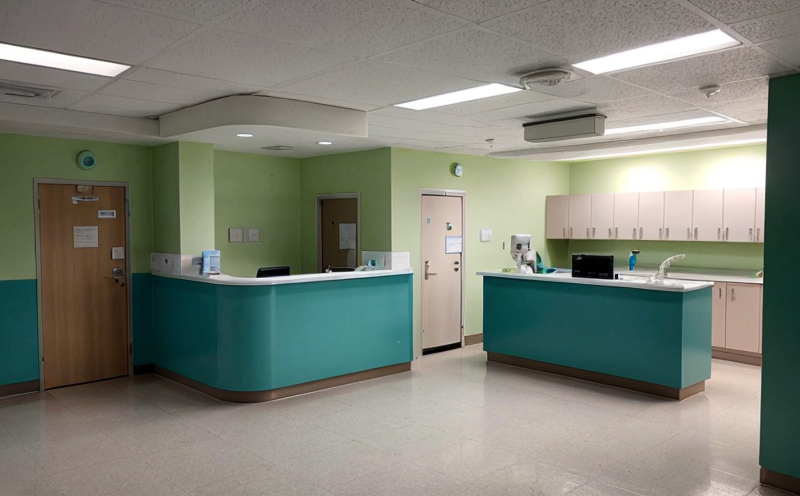WHO Waterborne Pathogen Testing in Healthcare Facilities
The World Health Organization (WHO) has set stringent guidelines for water quality and safety to prevent the transmission of waterborne pathogens that can cause illness, especially in healthcare facilities where patients are vulnerable. WHO Waterborne Pathogen Testing is critical for ensuring potable water meets these standards and remains safe for consumption by staff and visitors.
Incorporating advanced microbiological techniques, this testing ensures that water sources do not harbor harmful bacteria, viruses, or other microorganisms that can lead to outbreaks of diseases such as typhoid fever, cholera, and dysentery. The primary goal is to protect the health and safety of healthcare workers, patients, and visitors.
The process involves collecting samples from different points in the water distribution system, including faucets, showers, and other potential points of contact. Samples are then analyzed using culture-based methods or molecular techniques such as quantitative PCR (qPCR) to detect the presence of pathogens like Salmonella, Shigella, Campylobacter, and others.
Healthcare facilities face unique challenges in maintaining water quality due to complex plumbing systems and the presence of immunocompromised patients. Routine testing helps identify potential sources of contamination early, enabling timely interventions to mitigate risks. This testing also supports compliance with international standards such as ISO 28593:2017 and WHO guidelines.
Advanced filtration systems, UV disinfection, and chlorination are often used in conjunction with microbiological testing to ensure water is safe for use. However, these measures do not guarantee complete protection; regular monitoring through pathogen testing provides the necessary assurance that water quality remains within acceptable limits.
| Application | Description |
|---|---|
| Data Collection and Analysis | Collection of water samples from various points in the facility for pathogen detection. |
| Routine Monitoring | Ongoing testing to ensure water quality is maintained over time. |
| Diagnostics and Prevention | Identification of pathogens early in the water system to prevent outbreaks. |
- Data Collection: Systematic sampling from different points within the facility.
- Routine Monitoring: Regular intervals for collecting and testing samples.
- Diagnostics: Immediate action following positive test results to identify sources of contamination.
Industry Applications
The WHO Waterborne Pathogen Testing is applicable across various healthcare settings, including hospitals, nursing homes, and outpatient clinics. The primary application lies in ensuring that water systems are free from pathogens that could pose a risk to patients and staff.
- Data Collection: Systematic sampling from different points within the facility ensures comprehensive data for analysis.
- Routine Monitoring: Regular intervals for collecting and testing samples to maintain consistent water quality standards.
- Diagnostics: Immediate action following positive test results helps in identifying sources of contamination early, preventing outbreaks.
Why Choose This Test
The WHO Waterborne Pathogen Testing is essential for maintaining a safe and healthy environment within healthcare facilities. Regular testing ensures that water supplies are free from harmful pathogens, reducing the risk of waterborne illnesses among patients, staff, and visitors.
- Compliance with International Standards: Adherence to WHO guidelines and ISO standards.
- Risk Reduction: Early detection of potential contamination sources prevents outbreaks and associated health risks.
- Enhanced Reputation: Demonstrating a commitment to patient safety enhances the facility's reputation in the community.
Use Cases and Application Examples
A healthcare facility conducted routine microbiological testing and identified the presence of Salmonella in its water supply. Upon investigation, it was discovered that a leaking pipe near the kitchen had allowed fecal matter to contaminate the water system. The facility immediately shut down affected areas, cleaned and disinfected the plumbing, and replaced contaminated sections. Routine follow-up tests confirmed the resolution of the issue.
Another example involves a hospital with a large number of immunocompromised patients. After implementing regular pathogen testing as part of its quality assurance program, the facility was able to identify and address minor contamination issues before they escalated into significant health risks. This proactive approach has since reduced the incidence of waterborne illnesses within the institution.





